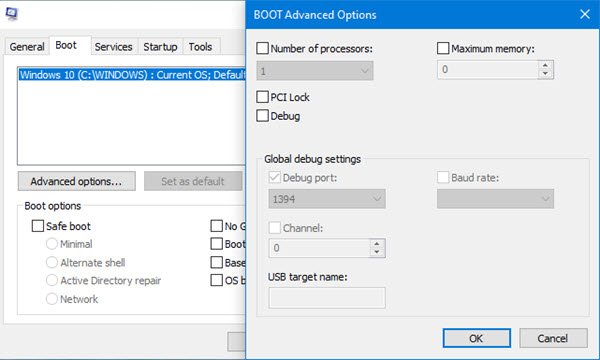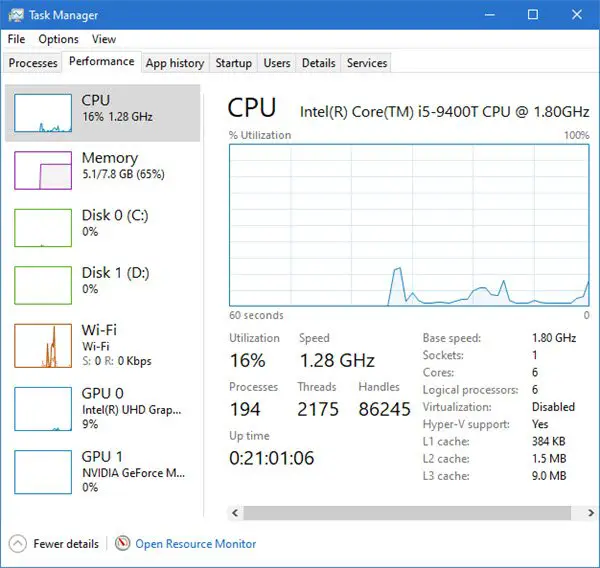MSConfig or System Configuration Utility is an inbuilt tool in Windows that allows you to manage startup items, boot options, Services & boot in Safe Mode, etc. Under the boot section, there is an Advanced Options button. This section gives you access to configure options such as the number of processors, the amount of memory, debug, and Global Debug settings. Keep in mind that these options are last-resort choices to diagnose your systems for advanced users. In this post, we will get into details about these Boot Advanced Options in MSCONFIG in Windows 11/10.

Boot Advanced Options in MSCONFIG
There is one thing you need to understand clearly. The advanced boot section of System Configuration Utility or MSCONFIG is built for troubleshooting. However, the confusion occurs when the end-user finds this option. We strongly urge you to keep these settings at their default values and not change them.
Number of Processors

Open Task Manager and switch to the Performance tab. Note the number of CPU cores and memory.
Now, type MSCONFIG in the Run prompt, and press the Enter key. Switch to Boot section, and click on the Advanced options button
Check the number of processors box and select anything less than the maximum available in the dropdown. The maximum figure you see will be the same as what you saw in the Task Manager.
Reboot, and then check how many processors and memory is available for the OS.
I am sure you will experience a slower performance compared to what you had when the computer boots under the default configuration. While I am not sure why these settings are there, I am guessing it helps developers to figure out how their application performs under low hardware configuration without changing the actual hardware configuration. The same can apply for Windows.
Now, let’s take a look at the other sections:
PCI Lock
PCI is a hardware bus for adding components to a computer. The BIOS or OS can determine the resource requirement and automatically assign it, so there is no conflict. In earlier days, it was useful, as Windows used to take this over.
From what I have seen in forums, it is best to keep it unchecked unless you are having issues with connected hardware. Windows can take this over, but we haven’t heard about it except that when checked, it results in a BSOD.
If you have checked PCI Lock, and are getting a BSOD, make sure to boot into safe mode, and then disable the PCI lock using msconfig. You may need a bootable USB device to get into the Advanced Boot configuration.
Debug
It is a developer option where to debug Kernel, debugging tools are connected to the OS. Again it is a non-consumer option and should be left as is. When you check Debug, you can configure the rest of the options, including Debug port, Channel, USB target name, and Baud rate. When using this, you must disable or suspend BitLocker and Secure Boot on the computer.
There is a lot that can be done using the bcdedit tool in Windows 11/10, which also offers /dbgsettings as one of the options. You can use it to disable driver signature, enable or disable data execution, and so on.
You will also see other settings for Maximum memory, Global debug settings, etc.
One thing is clear here: These are not consumer options, and you cannot use them to speed up computers. These Advanced options are debugging tools, and they have been there as long as I can remember. There are many such tools in Windows, and unless you are into hardware debugging, do not use them.
I hope the post was easy to understand and you figured out why you, as a consumer, should not be using the Boot Advanced Options in MSCONFIG in Windows 11/10.
Leave a Reply